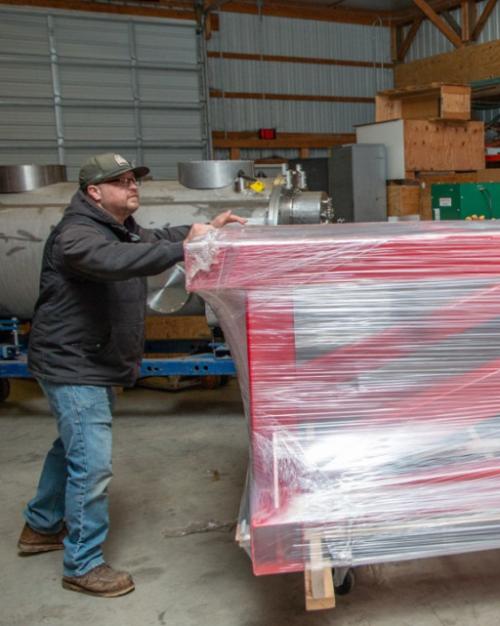Active learning strategies transformed what could have been a class of slides and lectures this past semester into one in which students debated, created and thought critically about what statues mean, from antiquity to today.
The new classics and art history course, Statues and Public Life, is part of the classics department’s participation in Cornell’s Active Learning Initiative (ALI), begun in the College of Arts & Sciences and now administered through the Office of the Provost and supported by the Center for Teaching Innovation.
The experience surpassed instructors’ expectations.
“This has made me want to redesign every undergraduate class I teach,” said Verity Platt, professor of classics and art history. “The results have been higher and more visible student comprehension, sophistication in critical thinking and confidence. It’s been really revelatory.”
The introductory course asks students to consider how statues generate ideas about power, politics, gender, race and ideologies, and the relationships between them. It begins in the Greek and Roman classical tradition but expands across periods and cultures, encompassing debates around confederate statues and examinations of the monuments students encounter every day.
From the outset, designing the course around active learning allowed for this expansiveness in content. In a traditional course, Platt said she would have relayed a greater quantity of information through lectures, and students would have passively received it. Pulling back from that model, she and active learning postdoctoral fellow Stephen Sansom were able to include content that made the concepts more relevant for students.
“Not being so confined to content delivery has liberated me to introduce all kinds of topics and examples that I would not have done normally because it would have been beyond the classical world,” said Platt. “Now, there’s far more diversity in terms of the cultural context and in terms of the issues of race and class that we’re discussing. The students are completely engaged.”
In-class activities were designed to get students to analyze and grapple with the content. Sansom, who completed his Ph.D. in classical languages and literature in 2018 at Stanford University, has provided essential support in creating and implementing lesson plans.
One of Sansom’s favorite types of activities for the course has been engaging the students in predictive modeling. In one class, students were given the actual proposals for a monument erected shortly after the Civil War in honor of emancipation. Students worked in groups to analyze the options and came to a decision about which was most appropriate.
As a class, they picked the same monument that was commissioned in Washington, D.C., in 1876.
“They predicted all of the problems that the research on these images has been talking about with very minimal scaffolding,” Sansom said. “Then, what was next-level was that the committee ended up changing the model to incorporate other elements. When we showed the students the final product, they could easily see and discuss the changes that were made and the effects. These kinds of practices really encourage curiosity and creative thinking.”
In another assignment, students were asked to choose a statue on the Cornell campus and conduct a visual analysis, looking carefully at its positioning in the space, the kind of space, and how passersby interact with and relate to it.
“We wanted them to really work with what was around them, thinking hard about how statues relate to the community here,” Platt said. “This encourages a kind of empathetic thinking as well.”
Platt’s hope is that these critical and creative thinking skills will serve the students better than the higher quantity of factual content she might have included in a traditional class.
“For a 1,000-level course aimed at non-majors, what matters really is they take those skills and those concepts and they’re able to look at any statue anywhere in the world and have a particular set of questions and problems they bring to it,” Platt said. “The important thing is they know what questions to ask.”
The course is just one part of the departmentwide project to incorporate active learning. “Active learning seems to be in the air at a lot of places,” Sansom said. “But having whole departments get together and communally agree to these values of teaching and learning is very unique. Cornell is at the forefront.”
This story also appeared in the Cornell Chronicle.




